
33 Swiss inventions that will amaze you
This article is all about amazing Swiss inventions. Here you'll meet the country's inventive spirit. Innovation is a tradition here. Switzerland is the world champion in patents, making it the most inventive country in the world. Let us surprise you.
With 968 patent applications per million inhabitants, Switzerland leads the global ranking. This puts it well ahead of Sweden (488) and Denmark (454) in first place. The USA is in 15th place with 140 patent applications, after Japan (172) and France (161).
Medical technology is currently considered to be particularly research-intensive. In the second year of the recent pandemic, applications increased by a third, especially for inhalation devices along with numerous other medical devices. The European Patent Office (EPO) currently calls medical technology the "most important field of technology
Innovation creates prosperity and makes Switzerland what it is today. Behind every brilliant idea there is always a human being. In the following selection of Swiss discoveries, you will encounter the amazing achievements of brilliant minds. First, you will encounter four epoch-making Swiss inventions.
E = mc²
The most famous formula of all times. Its creator is Albert Einstein (1879-1955), "Pope of Physics", Swiss citizen and genius. You are undoubtedly familiar with the world-famous founder of the theory of relativity. What he thinks and writes still forms the basis of modern physics
But even geniuses are only human: Einstein was rejected at the first attempt at ETH Zurich because of his poor knowledge of French. But then he successfully graduated there as a teacher of mathematics and physics. During his time as an examiner at the patent office in Bern, he began to deal with fundamental questions of physics.
in 1905 he published five significant works in Switzerland, revolutionizing the natural sciences. in 1907, he put his theory of relativity into words in writing for the first time. The ingenious formula: E = mc² was born. Energy (E) is equal to the mass (m), times the speed of light (c) to the power of two (2)
It shows us, among other things, how space and time are connected.
The phenomenon Einstein constantly developed his grandiose work of thought. in 1921, the scientist received the Nobel Prize for Physics. By the way, did you know that he used his prize money for the divorce settlement? His new way of seeing things changed the world permanently and established his reputation as a modern icon of the 20th century.
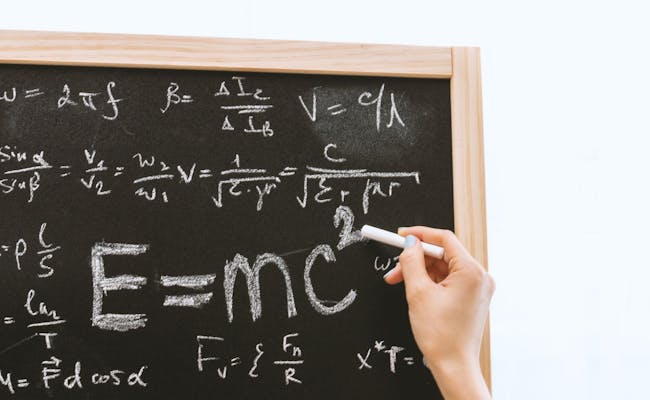 Die berühmte Formel E=mc²...
Die berühmte Formel E=mc²...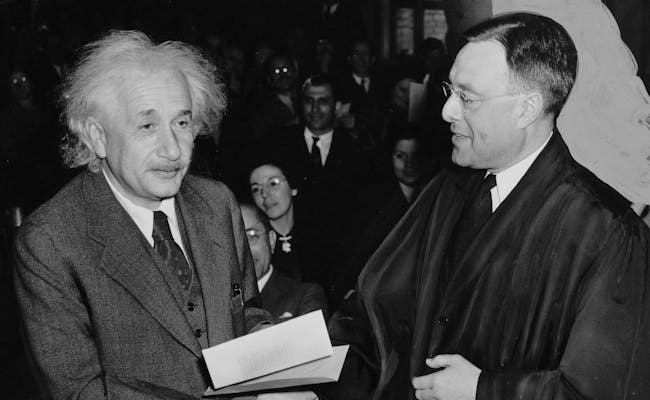 ... stammt vom berühmten Physiker Albert Einstein.
... stammt vom berühmten Physiker Albert Einstein.World Wide Web
Useful fire, agriculture, the wheel, timekeeping, writing, electricity, the engine, and the computer We reverently refer to them all as "epoch-making inventions" or "milestones in human history." The Internet, the "World Wide Web," definitely belongs in this category as well
The three letters WWW stand for a completely new world. As you read this article, you are in it right now. The Internet as you know it today was born in Switzerland at CERN near Geneva. This Swiss research institute is one of the world's most important centers for basic physics research
On the threshold of the new millennium, mankind entered a new era. For on November 13, 1990, CERN put the first website online via its own web server: info.cern.ch. in 1994, more data flowed over the WWW than over "Telnet" for the first time. Shortly afterwards, "FTP" lost its status as the most-used Internet service in favor of the World Wide Web.
in 2021, 1.88 billion websites were online under "www." Tim Berners-Lee and Robert Cailliau, both at CERN, emerged in 1989 as the spiritual fathers and thus the inventors of our beloved three letters
We at Swiss Activities say to that: Thanks guys!
 Das Internet hat seinen Ursprung...
Das Internet hat seinen Ursprung...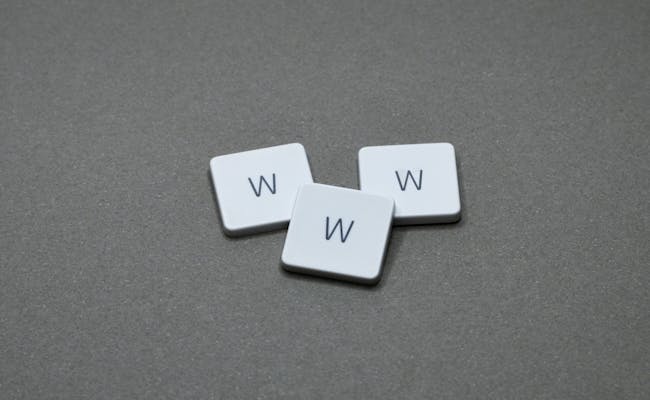 ... im CERN in Genf.
... im CERN in Genf.DNA
Friedrich Miescher (1844-1895) from Basel is considered the discoverer of "deoxyribonucleic acid" (DNA for short). Imagine this brave biochemist in his then ice-cold laboratory. The young researcher was not even bothered by the strong-smelling secondhand pus dressings he obtained fresh from the hospital for his work. in 1869, he isolated the molecule of life for the first time, thus creating the basis of today's genetics.
Originally, he wanted to decode proteins of white blood cells. By pure chance, he discovered a substance with different chemical properties. Because it occurs only in the cell nucleus, he named it nucleus (nucleus means nucleus in Latin). The discovery of the hereditary molecule was one of the greatest events in biology.
But he did not know that he was looking through his microscope at the hereditary substance: DNA. That tangle in the cell nucleus that sends out genetic signals. It took his successors another 75 years to do this
But now you know which Swiss discovered the substance that encodes our genetic information and thus life.
 Die DNA wurde erstmals...
Die DNA wurde erstmals... ... in der Schweiz entdeckt.
... in der Schweiz entdeckt.ICRC (International Committee of the Red Cross)
In 1859, the Geneva businessman and humanitarian Henry Dunant (1828-1910) witnessed a battle near the northern Italian town of Solferino. six thousand soldiers lost their lives there, 40,000 were wounded. The misery was enormous and hit the devout Dunant right in the heart
The all-important sentence made the rounds: "Siamo tutti fratelli" - "We are all brothers"
To the best of their ability, the inhabitants of the nearby town of Castiglione cared for the victims of the battle. Dunant actively helped on the front line. Without regard to the person, whether friend or foe. A new idea that changed the face of the world
A year later, in his native Switzerland, he wrote his book on the horrors of war. His call for multinational aid societies was unmistakable. in 1863, Dunant presented his ideas to the "Gemeinnützige Gesellschaft" in Geneva. It was the birth of the "International Committee of the Red Cross", today's ICRC.
in 1901, together with the French pacifist Frédéric Passy, he received the first ever Nobel Peace Prize. The inventor of the Red Cross did not touch the prize money of around 100,000 Swiss francs throughout his life. Instead, he bequeathed it to charity.
 Henri Dunant, der Erfinder des IKRK...
Henri Dunant, der Erfinder des IKRK...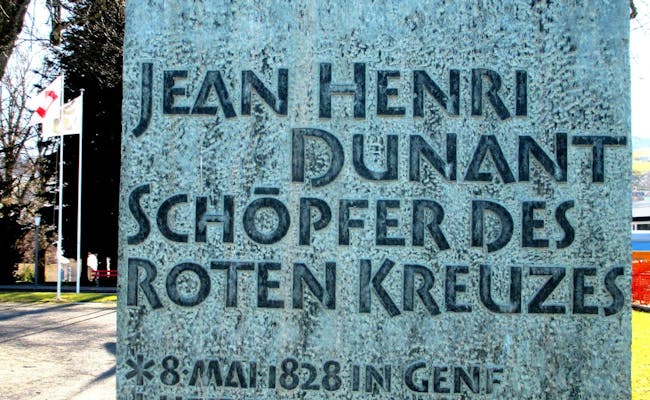 ... war ein Schweizer.
... war ein Schweizer.Heidi
A little girl from the Swiss mountains conquered the world and millions of children's hearts with her kindness. You probably know Heidi as an ambassador for our country. Since ever this world bestseller decorates the bookshelves of whole generations.
Translated into over 50 languages and filmed several times, Heidi embodies those timeless values. These are joie de vivre, freedom, friendship and love. Its inventor was the Swiss author of books for young people and children Johanna Spyri (1827-1901).
Love of home plays a major role in Heidi. The author created the famous "Dörfli" as the hometown of her heroine. In the municipality of Maienfeld near Bad Ragaz in the Canton of Graubünden you can visit the Heidi village in the flesh.
It was there that Spyri was inspired to write her story, when women were not allowed to do anything except have children. The internationally successful writer Johanna Spyri therefore also stands for a new era of awakening. Heidi is definitely a cult.
 (Foto: Schweiz Tourismus Gaudenz Danuser)
(Foto: Schweiz Tourismus Gaudenz Danuser) (Foto: Schweiz Tourismus Gaudenz Danuser)
(Foto: Schweiz Tourismus Gaudenz Danuser)Swiss chocolate
Mountains, Heidi and also "Schoggi" are inseparably linked with the Swiss image. This is despite the fact that cocoa beans do not grow in the Alpine country. In the 19th century, innovative inventive minds made Swiss chocolate what it is today: the epitome of sweet excellence.
Throughout Switzerland, chocolate pioneers founded their melodious companies: Favarger in Geneva in 1826, Kohler in Lausanne in 1830 (father of hazelnut chocolate), Sprüngli in Zurich in 1845, Maestrani in Lucerne/St. Gallen in 1852, Munz in Flawil in 1874, and Jean Tobler in Bern in 1899, to name a few
The following four, however, are definitely worth mentioning in more detail:
François-Louis Cailler (1796-1852), father of the chocolate bar, opened the first mechanized chocolate factory near Vevey in 1819 with the oldest Swiss chocolate brand still in existence. Son-in-law Daniel Peter (1836-1919) followed him as the inventor of milk chocolate, adding condensed milk to cocoa in 1875. Philippe Suchard (1797-1884) invented the "mélangeur" near Neuchâtel for mixing sugar and cocoa powder. To this day in must in any Swiss chocolate production.
Theodor Tobler (1876-1941) followed father Jean and launched the Swiss landmark Toblerone in 1908. in 1970, the Matterhorn made it onto the packaging. The sweet triangle is a mixture of the Italian sweet "Torrone" (egg white, nuts, honey, sugar) and the nougat chocolate. As a patron with a social conscience and a declared pacifist who also supported women's suffrage and maternity leave, the Toblerone inventor was ahead of his time.
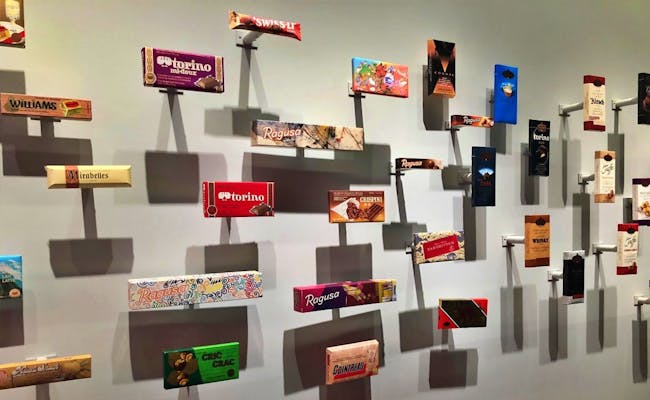 Ragusa und Lindt sind nur zwei...
Ragusa und Lindt sind nur zwei...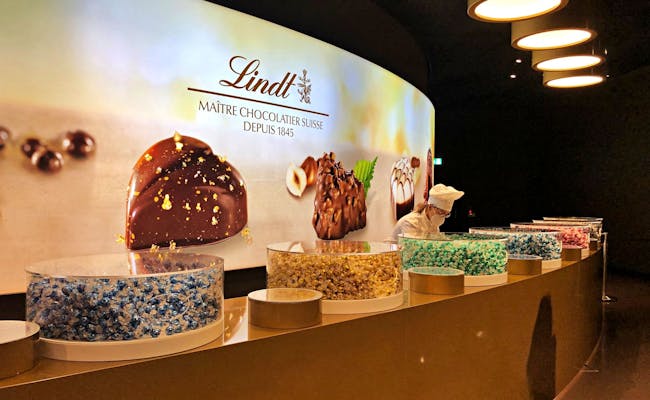 ... von vielen Schweizer Schokoladen Marken.
... von vielen Schweizer Schokoladen Marken.From Swatch to Longines Feuille d'Or
The Swiss Watch is as much a part of Switzerland as Heidi and the mountains. As with chocolate, a number of innovative pioneers made the Swiss watch number one worldwide. In this article, you'll learn more about two prominent trailblazers.
Are you among those who were able to afford a watch for the first time out of their own pocket money in the early 80s? Nicolas Hayek (1928-2010), founder of the Swatch Group, made it possible in 1983 and saved the Swiss watch industry, which was suffering from cheap imports at the time, from extinction. The revolutionary plastic watch consists of two-thirds fewer parts and is manufactured by robots
The new timepiece for everyone is original and colorful. Good marketing made the "Swatch" a fashion accessory and cult collector's item worldwide. For the sake of innovation, Hayek brought the much-hyped watch concept of two young Swiss engineers out of obscurity. It is Elmar Mock (1954) and his co-inventor Jacques Müller to whom we owe this ticking piece of Switzerland.
Before that, the Swiss watchmaking nation sent a memorable message to the dreaded Japanese competition. After a gigantic development effort, Longines launched the world's thinnest quartz watch in 1979 with its Feuille d'Or. With a case height of 1.98 mm, the elegant timepiece permanently undermined the previous Japanese world record. As so often, innovation made the difference.
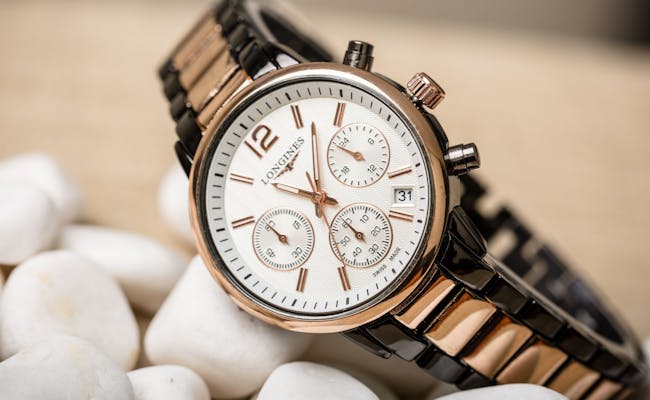 Die Schweiz hat eine lange Geschichte in der Uhrenherstellung.
Die Schweiz hat eine lange Geschichte in der Uhrenherstellung.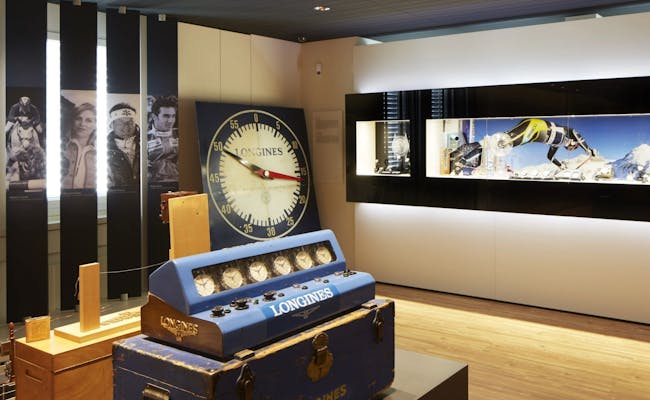 (Foto: Schweiz Tourismus)
(Foto: Schweiz Tourismus)From the artery clamp to the artificial hip joint
At the end of the 19th century, the Swiss surgeon Theodor Kocher (1841-1917) developed the artery clamp in Bern. Even today, the "Kocher clamp" prevents bleeding to death on the operating table
His tremendous inventiveness developed a number of other surgical instruments, procedures and therapies. Kocher is considered a pioneer of head surgery and was awarded the Nobel Prize for Medicine in 1909.
Switzerland's pioneering role in medical technology is also evident in the case of orthopedist Maurice Edmond Müller (1918-2009) from Bern. As an entrepreneur and pioneer of osteosynthesis, he invented and marketed the artificial hip joint. You later know it as the "Sulzer joint".
The profits went into research. Prof. Müller combined at least twelve doctoral and honorary doctorate degrees, but also sometimes allowed himself to be called a "bone plumber". Throughout his life, the Swiss philanthropist saw himself as a "servant of humanity.
The Swiss Army Knife
The winged expression from French "a real Swiss Army Knife" describes a versatile and reliable person. This also applies to our national symbol. In this cult tool you will find a lot of what makes our country.
in 1884, Swiss cutler Karl Elsener founded what would later become Victorinox in the canton of Schwyz, creating much-needed jobs. in 1897, the innovative entrepreneur invented the pocket knife as you know it. With it, he landed a global hit that still stands for Swiss quality and inventive spirit today.
Elsener embodied those virtues that are embodied in his "pocket knife". Those values that also make up his successful company. Victorinox is considered solid, consistent and innovative. Just like Switzerland.
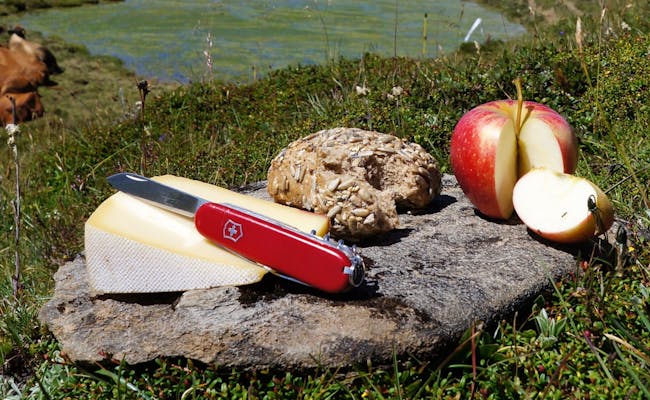 Das weltberühmte Schweizer Taschenmesser...
Das weltberühmte Schweizer Taschenmesser...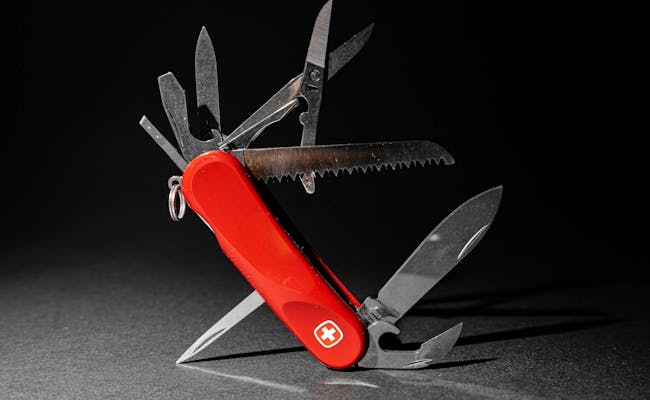 ... stammt von der Schweizer Firma Victorinox.
... stammt von der Schweizer Firma Victorinox.Paracelsus stone of immortality
If you are interested in naturopathy, then Theophrastus Bombastus von Hohenheim, or Paracelsus for short (1493-1541), is the right person for you. He studied medicine at the age of 16 and earned his living as an itinerant physician. Soon the Swiss naturalist recognized the anesthetic effect of opium.
He dissolved the drug in alcohol and administered the tincture to his patients and even infants. As "laudanum" it became the aspirin of the 15th century and spread throughout Europe as a panacea. Hence sometimes the resonant name: stone of immortality.
Paracelsus focused on new healing methods. He based his therapy holistically on the nature of the disease and broke with the stubborn textbook treatment. Maybe that's why you know him as the forefather of today's naturopathy.
LSD
In search of circulatory stimulant, Swiss chemist Albert Hofmann (1906-2008) investigated a cereal fungus. His experiments produced lysergic acid diethylamide (LSD) in 1938. However, the inventor did not immediately recognize its effect.
It was not until 1943 that he realized it, whereupon he ventured a self-experiment in the Basel laboratory. In Hofmann's autobiography, you will read that he then blissfully rode home on his bicycle
So it was the first LSD trip in history.
An entire era fell under the psychedelic spell after that. The flower power movement, the Beatles with their world hit Lucy in the Sky With Diamonds... The hallucinogen was omnipresent. Regardless of the LSD ban from the 60s, the inventor consumed his substance until old age.
Milk powder
Wealthy women didn't want and working class women couldn't breastfeed. In parts of Europe in the 19th century, you encountered only 15% breastfed babies. You looked in vain for suitable baby food, poor hygiene and lead poisoning from canned food were widespread. Infant mortality was an appalling 25%
So it was only natural that Henri Nestlé (1814-1890) should advertise his milk powder as a "substitute for mother's milk." "My infant powder contains above all the best milk, sugar and bread," Nestlé said in the advertising campaign for his new invention.
The full-blooded entrepreneur consciously used the knowledge gained from previous breast milk research. in 1867, he developed his milk powder to product maturity. On April 9, 1872, he patented its manufacture. The "infant cereal" became an export hit.
We know Nestlé as a top international company in the food sector. From the very beginning, the advent of powdered milk helped to reduce infant mortality. Even today, you encounter this saving elixir of life from Switzerland in famines and wars.
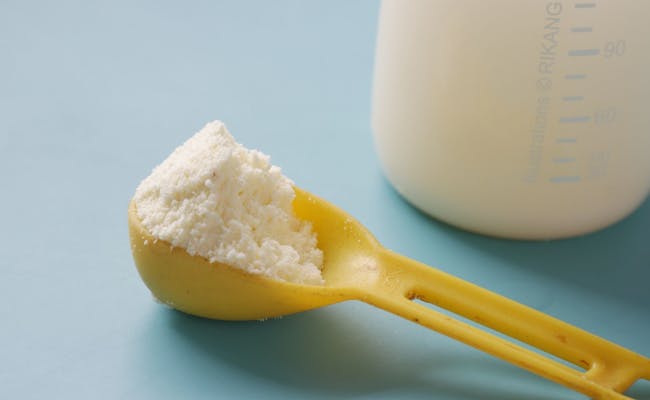 Wusstest du, dass das Milchpulver...
Wusstest du, dass das Milchpulver...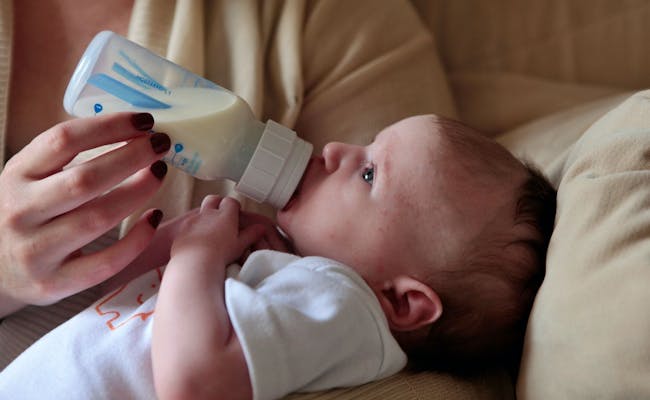 ... erstmals 1872 auf den Markt kam?
... erstmals 1872 auf den Markt kam?From Nescafé to Nespresso
Stock market crash in 1929: Brazil sits on mountains of unsold coffee beans. The Swiss company Nestlé is supposed to help. But a water-soluble granulate has yet to be invented
Chemist Max Morgenthaler (1901-1980) was entrusted with the task and even conducted research in his private kitchen. in 1938, he came up with his brilliant idea: carbohydrates gave the broth its authentic coffee flavor. Now you know where your Nescafé comes from.
You have an observant Italian traveler to thank for Nespresso. Aerodynamics engineer Éric Favre watched a savvy barista and understood: "Fragrances and flavors become more intense when they come into contact with oxygen."
After years, his experiments bore fruit. In the 1980s, for example, Favre invented the closed coffee capsule. With it, Nestlé landed a Swiss global hit with Nespresso
"What else?"
 Ob George Clooney wohl weiss...
Ob George Clooney wohl weiss...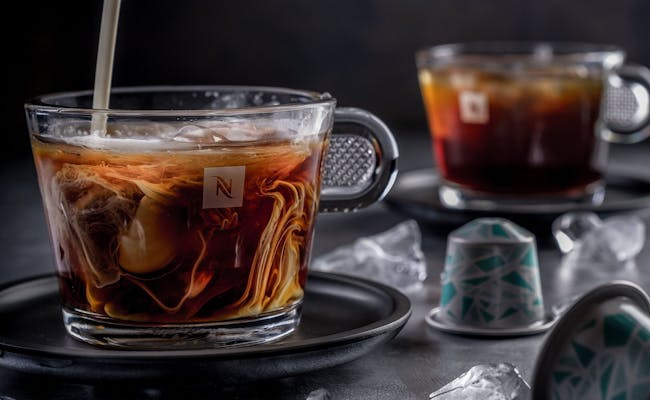 ... dass die Nespresso Kapseln ihren Ursprung in der Schweiz haben?
... dass die Nespresso Kapseln ihren Ursprung in der Schweiz haben?Ovomaltine
You may know Ovomaltine as a traditional Swiss drink. In over 100 countries, the bright orange Ovo label stands for power and health. The milk you add to it rounds out the wholesome nutrition.
The story of Ovaltine began in Bern in 1865. Malnutrition and undernourishment were devastating at the time. The Swiss pharmacist Dr. Georg Wander (1841-1897) was looking for a solution. In the process, he came across the time-honored natural product malt with its healing, vital ingredients
Wander developed a restorative product to which many infants and sick people subsequently owed their lives. His son refined and enriched his father's power nutrient. The result was today's Ovomaltine. Originally a medicine for the weak, today a mobile powerhouse for athletes.
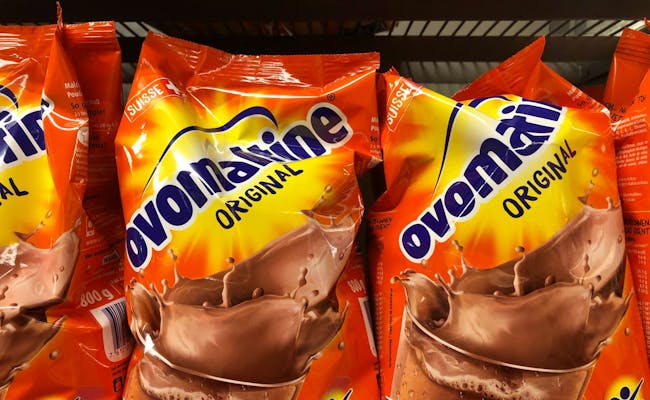 Gehört in jeden Schweizer Haushalt.
Gehört in jeden Schweizer Haushalt. Die legendäre Ovomaltine (Foto: Schweiz Tourismus Wander)
Die legendäre Ovomaltine (Foto: Schweiz Tourismus Wander)From processed cheese to ready-made fondue
You appreciate fast food? Then you also know: no Gerber, no cheeseburger. Swiss cheese maker Walter Gerber (1879-1942) invented processed cheese in 1913 after years of research
Because his cheese became inedible when exported to warm countries at the time, the innovative entrepreneur set to work in 1905. His goal: to preserve cheese without refrigeration. The groundbreaking result: prefabricated cheese slices with a low melting point, just the way you love them. A culinary revolution.
in 1960, the Gerber company definitely set a monument to itself with the first ready-made fondue. From then on, your fondue became "almost" too. Gerber belongs to Switzerland like the cheeseburger belongs to fast food.
From Aromat to Maggi
You've probably seen the little red man on the yellow Aromat can somewhere before
Even top chefs use the all-rounder. In 1945, the Swiss Walter Obrist invented the miracle spice for Knorr near Schaffhausen. Just a short time later, Aromat was known to most people. Everything was automated, including seasoning. Today, the yellow spice tin belongs in every Swiss household.
Often, crises also harbor opportunities. It was the same with the Swiss miller Julius Maggi (1846-1912), who got caught up in the milling crisis that was prevailing throughout Europe at the time. Out of necessity, he invented his world-famous bouillon extract in 1886 and advanced to become a successful entrepreneur
He always dreamed of making healthy food possible for everyone. This dream lives on.
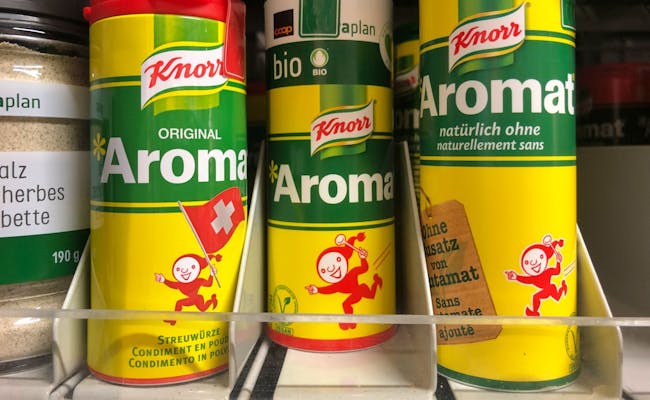 Weltweit bekannt und erfunden in der Schweiz.
Weltweit bekannt und erfunden in der Schweiz. 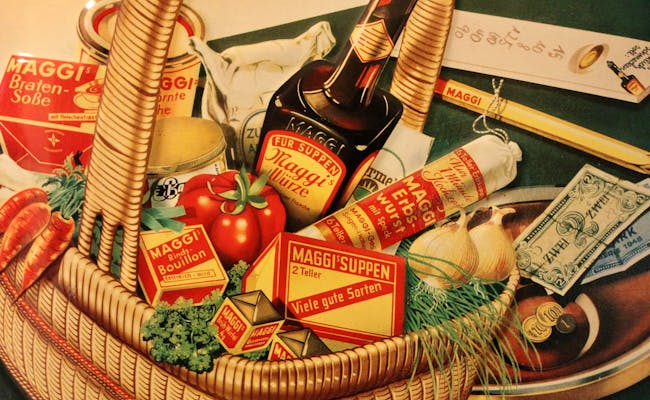 Aromat und Maggi gehören einfach in jede Küche.
Aromat und Maggi gehören einfach in jede Küche. Ricola
"Who invented it?"
You probably know this advertising slogan. The Swiss master baker Emil Richterich (1901-1973) invented it. He invented the world-famous Ricola herb candy, unmistakable for its square shape. The absolute epitome of Swissness.
As a nature lover, he was overwhelmed by the diversity of Swiss herbs: "You'd have to make something clever out of that," he thought. in 1930, he founded Richterich & Co, a confectionery factory near Basel. There he could often be found in his "witches' kitchen" experimenting with various herbal recipes.
in 1940, the 13-herb mixture was invented. "It was the birth of the Ricola original, the Swiss herbal sugar," according to the company itself. Today, Ricola exports its healthy sweet tooth all over the world. And with it, a little piece of Switzerland.
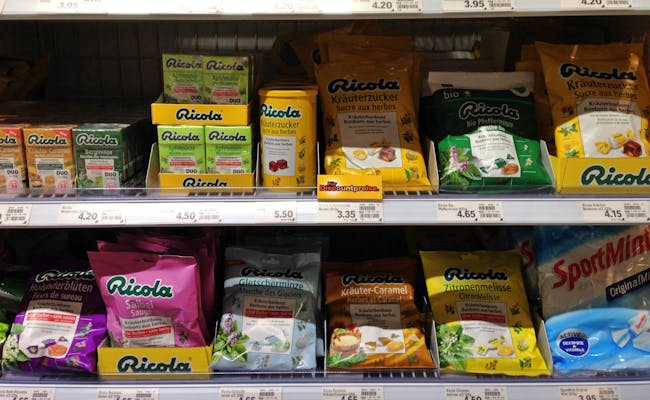 Ricola wirkt Wunder bei einem kratzenden Hals.
Ricola wirkt Wunder bei einem kratzenden Hals. Ricolagarten (Foto: Schweiz Tourismus)
Ricolagarten (Foto: Schweiz Tourismus)Birchermüesli
Doctor Maximilian Oskar Bircher Benner (1867-1939), a noble name for the Swiss inventor of just such a breakfast. Rich in vitamins and everything else you need for a successful start to the day.
On a mountain hike in 1900, a dairymaid unsuspectingly served him her müsli-like everyday dish. Enthusiastic, the nutritionist created his own recipe. He was interested in a rich raw food dish for therapeutic purposes. The result became the epitome of healthy nutrition.
Because a suitable treatment was lacking, the physician prescribed his newly invented "apple diet food" to a patient. With the spectacular success of the therapy, this food also became established in everyday life. Not least because of its good effect against the well-known sailor's disease scurvy.
Soon it was affectionately renamed after its inventor: "Birchermüesli". A Swiss classic.
Doodle
You want to go out for dinner with friends and you organize. A grueling undertaking to unite everyone. That's when you need help and find Doodle.
Just download the Swiss scheduling app and your organizing stress is over
You have Swiss computer scientist Myke Näf to thank for that. He developed the program in 2003 and, together with Paul Seviç, founded what is now Doodle AG in 2007. A Swiss flagship start-up was born and grew rapidly
On the web you can currently read: 30 million users every month, 78,000 appointments a day and currently 70,000 companies are doodling.
Maxon Martian motors
A helicopter landing or a drone flight is no longer a sensation. But when the solar-powered drone flies over Mars and it finds hardly any atmosphere there, it is. Read and marvel.
in 2021, NASA's pioneering flight of the "Ingenuity" over the Red Planet took place. The noble drone weighing 1800 grams was powered by 6 thumbnail-sized electric motors from Switzerland. These futuristic little things come from the Obwalden-based company Maxon.
This high-tech house already made history in 1997 with the Mars rover "Sojourner", also driven by Maxon precision motors. Maxon had been producing the smallest, highly efficient drive motors since 1961. The milestone came in 1970 with a patent for a DC motor without an iron core
A revolution leading to the stars.
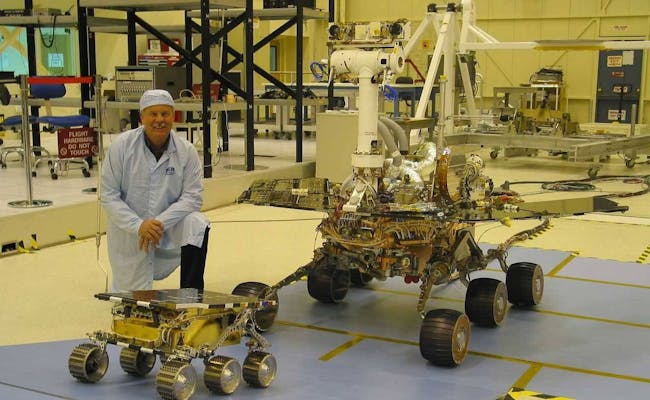 Auch bei der Erforschung des Mars mischt die Schweiz mit.
Auch bei der Erforschung des Mars mischt die Schweiz mit. (Foto: Unsplash)
(Foto: Unsplash)Store clean energy
What to do when renewable energy sun or wind stops? Take precautions and store the clean power. Without batteries or accumulators.
The Swiss are bringing an ecological storage method to market. In a high tower, cranes lift composite blocks weighing tons. The whole thing uses renewable energy and clever control software. When needed, you generate electricity by lowering the blocks.
You have constant baseload power with no loss. This sustainable alternative uses the basics of pumped storage power plants. But in a small space, clean, cheaper and everywhere.
The start-up "Energy Vault" is currently launching this storage revolution. Recently, the World Economic Forum named the Ticino-based company a "technology pioneer." A prototype is already to be sent to India after testing.
Solar Impulse II (Si2)
His grandfather flew into the stratosphere, his father dived into the ocean depths and son Bertrand circled the world in a solar airplane. Surely you know the Piccard dynasty of adventurers.
Swiss-born Bertrand Piccard (1958) wanted to introduce the world to environmentally friendly flying. He succeeded in 2015/16 with his round-the-world flight in the solar plane Si2. Powered by 17,428 solar cells, four battery motors at 100 km/h brought the machine to 8500 meters. The world tour of the flying high-tech laboratory was a success in stages
It flew for several days without interruption. Swiss engineer and fighter pilot André Borschberg (1952) also played a major role. Since Si2, clean flying is no longer science fiction
It is possible. Piccard has proven it.
Fully automated coffee machine
You press the button while still drowsy and freshly ground coffee fills your cup. Your hero is Arthur Schmed, an engineer from Zurich. He was already talking about fully automatic coffee machines in the 70s
in 1985, the Swiss appliance manufacturer "Solis" launched the fully automatic coffee machine. Solis patron Willy Nauer (1941) was allowed to sell the first miracle machines. He had financed Schmed's development in the years before
The machine was manufactured by the "Saeco" company. Engineer Schmed and tinkerer Sergio Zappella had previously worked together on Schmed's idea. in 1981, they founded Saeco, sealing its beginning in a Zurich garage.
Today, millions of coffee connoisseurs worldwide thank this great Swiss invention.
Bobsled track
The speeding Briton Wilson Smith braked his homemade sled on the canton road in St. Moritz with a garden rake. The forerunner of the skeleton was invented. Later, the Swiss Christian Mathis (1861-1925) developed the forefather of today's bobsled, which is much faster than skeleton. However, this required a suitable track.
The clever hotelier Caspar Badrutt (1848-1904) built an ice track for this purpose. in 1904, the world's first bobsleigh track led from St. Moritz to Celerina. As early as 1928, this natural ice track was the scene of an Olympic Games
Badrutt's work is the oldest bob run in the world still in use. It bears the venerable name: "Olympia Bob Run St. Moritz - Celerina" (OBR). Meanwhile, the only ice sports track in Switzerland.
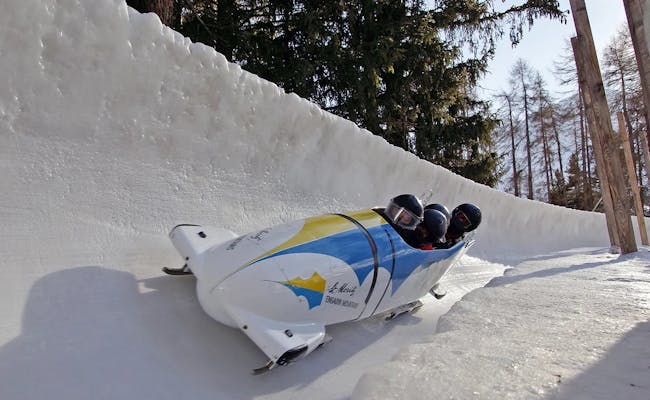 Der erste Eiskanal entstand im Engadin (Foto: Schweiz Tourismus)
Der erste Eiskanal entstand im Engadin (Foto: Schweiz Tourismus) 1982 wurde er Schauplatz einer Olympiade.
1982 wurde er Schauplatz einer Olympiade.Ski lift
Do you love skiing? Then this is your story
Christmas 1934 marked the dawn of a new era for skiing enthusiasts. The world's first ski lift opened in the Swiss winter sports resort of Davos. Its J-frame carried one guest at a time
Gone is the sweat, uphill the 270-meter route was easy. A day ticket cost 50 centimes and was very popular. It was invented by Ernst Gustav Constam (1888-1965) from Zurich. The inventive engineer patented his ski lift in 1930
The lift went twice as fast in the second ski season. Thanks to the T-bar, the one-man lift became a two-man lift. Davos experienced a rapid upswing and was considered a pioneer in winter sports.
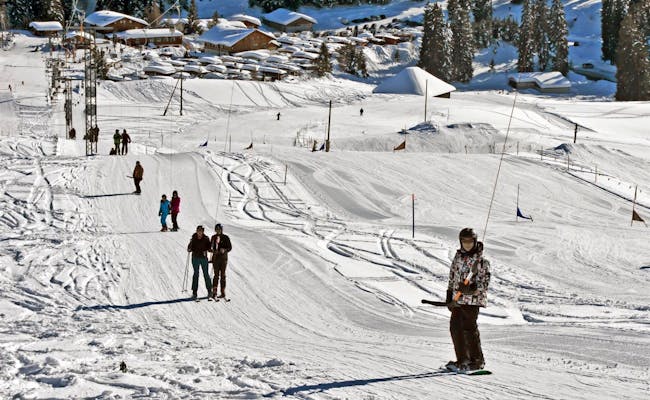 Der Skilift: was für eine praktische Erfindung (Foto: Schweiz Tourismus)
Der Skilift: was für eine praktische Erfindung (Foto: Schweiz Tourismus)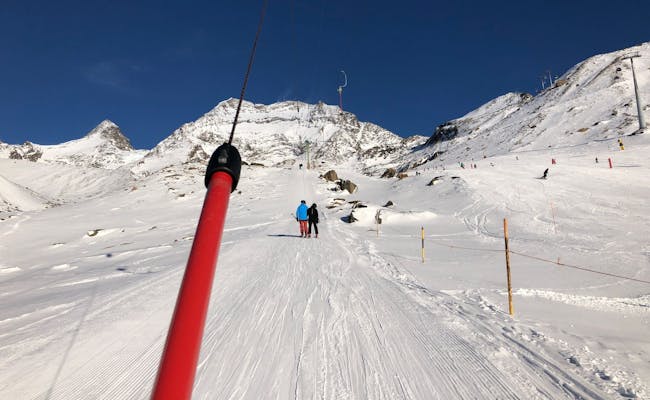 Er ermöglich uns seit 1934 das Skifahren.
Er ermöglich uns seit 1934 das Skifahren. Velogemel
The woodworker Christian Brühlmann (1872-1953) contracted polio at a young age. Despite his walking impairment, he made good progress with his bicycle in the summer, but in the winter it was difficult. So you think to yourself: It would be nice if the bike were also suitable for snow.
So in 1911, the creative man from Grindelwald tinkered with his first snow bike. The result was a maneuverable wooden frame that you steer sitting down like a bicycle, but with runners instead of wheels. The people in the village christened it "Velogemel" (bicycle sled) in their own dialect. In the same year, Brühlmann patented his unique Grindelwald product.
Brühlmann's business could hardly keep up with the brisk demand. Doctors, letter carriers, schoolchildren and many more succumbed to the Velogemel fever. Even today, the skid-bike from Grindelwald enjoys growing popularity
Let yourself be infected by outstanding riders at the annual Velogemel World Championships in Grindelwald.
 Der Velogemel ist eine Grindelwaldner Erfindung (Foto: Jungfrau Region Grindelwald)
Der Velogemel ist eine Grindelwaldner Erfindung (Foto: Jungfrau Region Grindelwald)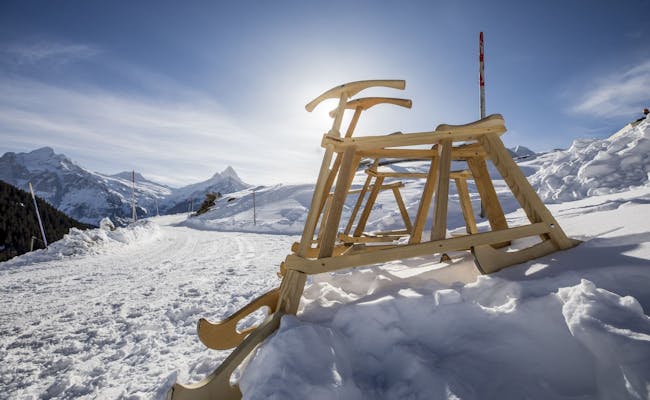 (Foto: Jungfrau Region Grindelwald)
(Foto: Jungfrau Region Grindelwald)Zipper
Martin Winterhalter (1889-1961) was an unruly and at the same time incredibly inventive child. Later on, his money wastage put him under enormous pressure to invent. This became the good fortune of us all.
in 1925, the genius launched the modern zipper made of ribs and grooves under the "Riri" brand. A new development of the predecessor principle of balls and jaws. The new closure system could be mass produced, became a huge success and made Winterhalter rich.
Over the years, international low-cost competition broke into the business. Today, Riri produces fine zippers for well-known brands at his headquarters in Ticino. Disinherited from his siblings, Winterhalter spent his last 10 years penniless in a mental institution
A sad end to a glorious story.
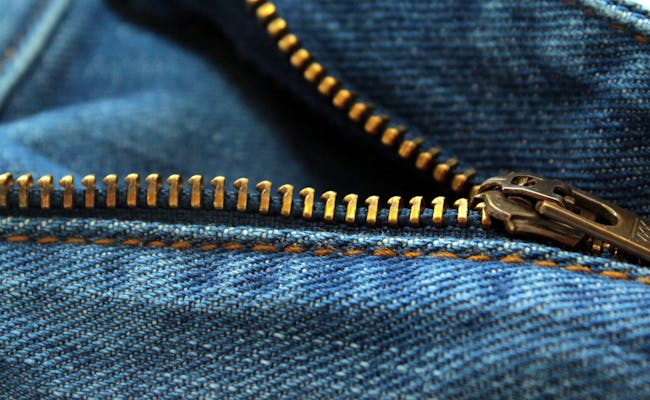 Wie praktisch ist er doch, der Reissverschluss.
Wie praktisch ist er doch, der Reissverschluss.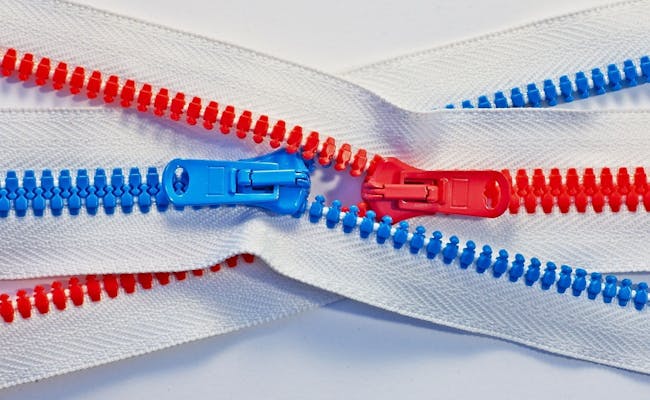 Wusstest du, dass auch er eine Schweizer Erfindung ist?
Wusstest du, dass auch er eine Schweizer Erfindung ist?Velcro fastener
Kids know Velcro because tying sneakers is a thing of the past. From fashion to NASA, these ingenious fasteners are used everywhere. During the 1969 Apollo space mission, astronauts used Velcro to combat weightlessness.
Swiss engineer Georges de Mestral (1907-1990) invented Velcro in the 1940s. The occasion was a hunting trip. Countless beads of tiny barbs stuck to the fur of his dog "Milka". They were the fruits of the wild burdock
He applied this natural principle to his invention. The VELCRO® brand became the face of this groundbreaking closure system. At the time, Mestral promoted it as a "zipper without a zipper"
Today, Velcro sticks to your everyday like a limpet.
Asphalt
How did asphalt get on the road? A Valais doctor, inventor and adventurer laid the foundation. Here you can learn the story of Ernest Guglielminetti (1862-1943) alias "Dr. Tar".
in 1902, Prince Albert I of Monaco approached the Swiss. He said that the large amount of dust from the new gravel car roads demanded a solution. The doctor remembered the tar-plastered military hospital floors from his service in Sumatra.
This should also be possible with roads, he thought, and in March 1902 he successfully tarred 40 meters of gravel. Soon Monaco was dust-free. The brilliant idea is still valid today, albeit with bitumen. However, Guglielminetti did not patent any of his inventions throughout his life.
 Den Grundstein für die Erfindung des Alphalts...
Den Grundstein für die Erfindung des Alphalts...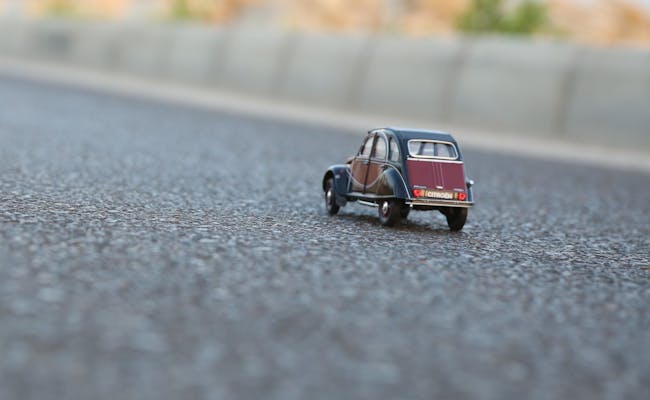 ... legte sage und schreibe ein Arzt.
... legte sage und schreibe ein Arzt.Cellophane
Like so many inventions, we use cellophane without thinking twice about it. Yet it took Swiss textile engineer Jacques E. Brandenberger (1872-1954) 12 busy years of research for cellophane.
His perseverance paid off. in 1908, he commercialized his invention and conquered the world market. He started it all with a defeat, failing in his attempt to develop water-repellent textiles. The fabric became unusable and the sprayed-on plastic coating came off again as a fine film.
This plastic skin gave Brandenberger the decisive brainwave. He perfected the future cellophane and developed its mechanical production. Today, it is hard to imagine a kitchen without this transparent aid.
Swiss design: from Helvetica to the SIGG bottle
Swiss design is businesslike and shapely. It stands for clear lines as well as quality. You can see it clearly in the numerous Swiss designer products. Here are two examples.
in 1957, the graphic designer and typographer Max Miedinger (1910-1980) designed the timeless standard typeface Helvetica in Basel. Its functional elegance makes it an icon of Swiss design. Today it is one of the most widely used typefaces of our time.
But there are more elegantly designed Swiss inventions. World celebrities from Cameron Diaz to Roger Federer to Greta Thunberg swear by the eternally beautiful Sigg designer bottle. Currently a trendy and ecological lifestyle accessory. The Original Swiss Bottle even made it to the Museum of Modern Art in New York (MoMA).
KABA reversible key
Fritz Schori (1890-1945), a precision mechanic from Biel, revolutionized locking technology in 1934. For his Zurich employer, he patented a key that could be used on both sides. More precisely, its lock: "Security lock with flat mortise key" was the memorable name of the federal patent
The cylinder lock with Yale bit key used until then had had its day. You can insert the new reversible key into the lock any way you want and have more security
The former "Schlosserei für Kassen- und Panzerschränke Bauer", popularly known as "Kassabauer", became KABA or today's "Dormakaba Group". It is the world's leading supplier of access solutions. So you always carry a remarkable Swiss invention on your key ring.
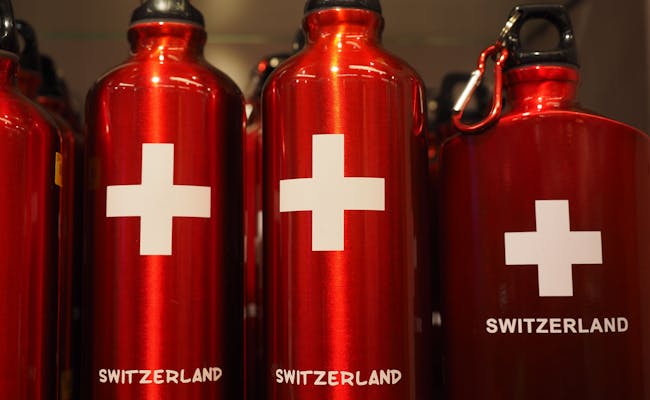 Sie gehört bei einer Wanderung einfach dazu: die Sigg Flasche
Sie gehört bei einer Wanderung einfach dazu: die Sigg Flasche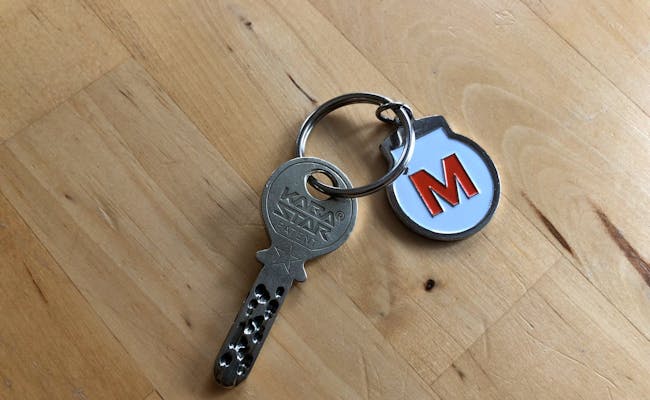 Trägst du auch ein Stück Schweizer Erfindungsgeschichte an deinem Schlüsselbund?
Trägst du auch ein Stück Schweizer Erfindungsgeschichte an deinem Schlüsselbund?WC duck
What the Americans have in Donald Duck, the Swiss have in WC duck. This duck was born in 1980 in Dällikon, Zurich. Its mission: cleanliness even where you can't get to it.
in 1951, housewife Maria Düring-Keller developed a highly effective bathroom descaler in her own vault. Dressed in Sunday best, she went out to catch customers. With charm and hat, she demonstrated the decalcifying miracle at the customer's toilet.
Her "Durgol" became a sales hit and gave birth to Düring AG. Son Walter took over and invented our duck in 1980: "I looked at my sketches, suddenly it clicked - a duck neck". The duck content came from wife Vera, also a druggist
A real Swiss family project.
 "Sauberkeit auch dort, wo du nicht hinkommst."
"Sauberkeit auch dort, wo du nicht hinkommst." So lautet das Motto der WC-Ente.
So lautet das Motto der WC-Ente.It is an ingenious cycle. Innovation generates prosperity and education; conversely, prosperity and education promote innovation. It is the Swiss way
Often our inventive spirit produces great things. Things that change our world and your life positively to this day. Looking at these Swiss inventions gives us hope for the future.